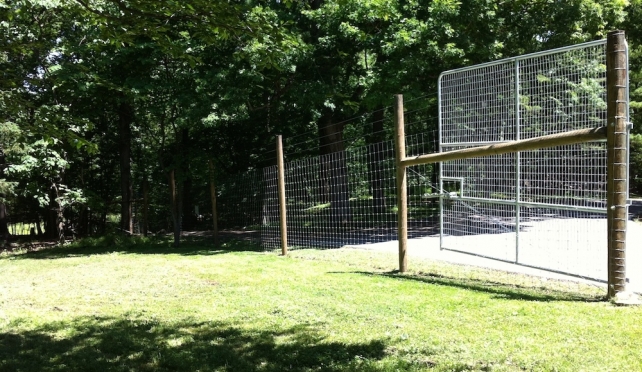by Greg Strella, Great Kids Farm Manager
If you get caught up in a conversation with any farmer or gardener in the mid-Atlantic, it won’t be long until the conversation turns to deer: the magnitude of their grazing, their favorite crops to destroy, and tricks for keeping their damage at bay.
Great Kids Farm is no exception. By our third season of operation, the deer had found us and settled in to habitual browsing on our beautiful buffet of organic vegetables. Besides being frustrating, keeping deer out of the fields was time consuming, diminished the outputs of student work in the fields, and disappointed our interns harvesting produce for market. But beyond that, in spring 2013, we had a bigger agenda on our horizon: to begin, for the first time, harvesting and distributing student-grown produce for service on cafeteria salad bars.
Accomplishing this feat required pushing our yields to new heights, but also that we hold our production methods to higher food safety standards than required for retail sales. For good reason, cafeteria produce must be raised in conditions that guarantee absolute minimum risk of contamination by soil- and animal-borne pathogens. Eliminating deer from our production areas was imperative.
We had in our hands a concept map and plan for an ambitious deer fence project, surrounding three sections of the Farm with a 10-foot, agricultural-grade fence (deer can jump really, really high). But we knew that, if we were going to move food from farm to school in 2013, the fence needed to become a reality by the first days of spring.
To my great relief, Friends eagerly stepped up to the task. Securing a combination of foundation grants, individual gifts, state agency support, and crowd-sourced funds, Friends moved the fence from concept to reality before the forsythia bloomed. And the effect was immediate, allowing us to produce bigger harvest of figs, berries, vegetables, and greens throughout the season for use in Farm programs and school-based nutrition programs. And then came the moment of truth: in early fall we harvested 2,200 pounds of beautiful beets for cafeteria service.
Throughout the fall, students visiting the Farm had an opportunity to sample different preparations of this often-unfamiliar vegetable, priming them for the arrival of shredded beet salad (labeled with the Great Kids Farm logo) on their cafeteria salad bar. This simple act—allowing students to meet a new food and taste it critically, then providing access to it in daily life—is a critical step forward for Great Kids Farm and City Schools.
It is with deep gratitude—to Friends of Great Kids Farm, to the Middendorf Foundation, to Jane Harrison and Richard Cone, to the Maryland Department of Agriculture, and to the GiveCorps Foundation and the many individuals who supported our campaign—that I open the Farm gates each morning, and greet burgeoning fields of produce that will soon be at work nourishing children’s bodies.


